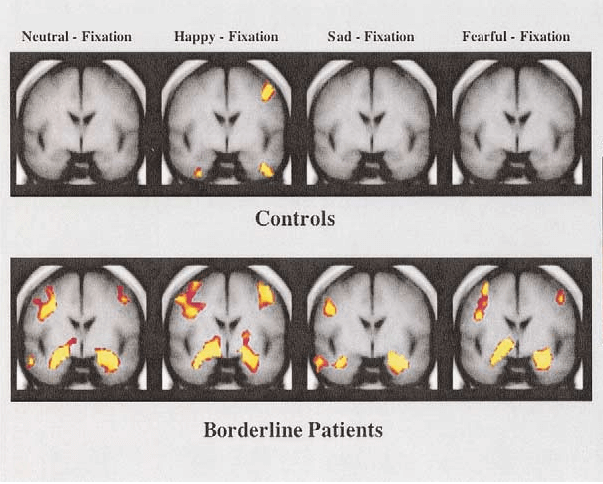Warning: The following contains mentions of self-harm behaviors that may be triggering to some audiences.
What exactly happens inside our brain when we get triggered? Understanding the biological processes of my body and brain was a profound gift for me in my healing journey.
At one point, self-harming behaviors were significant coping mechanisms for me. These behaviors did not conform to the stereotype of “cutting,” and sneakily found their way into my eating habits, relationship, and self-care (or lack thereof). When eating, I would find myself restricting or binging on food. Self-harming tendencies manifested in my relationships as attachment issues and various types of toxicity, and in my attempts as self-care as an utter lack of boundaries.
Being able to separate myself from what was going on biologically gave me power to play the observer role and think, “Oh, yeah, that’s why I feel that way!”
For this blog, my goal is to provide you with some brain reframes, empowering you with greater control when navigating intense emotions and triggers. When we find ourselves in a heightened emotional state, it’s like our brain transforms into a zoo…
Your amygdala gets activated. I invite you to think of your amygdala as your brain’s guard dog. When it detects stress, it begins to bark; the bigger the stress, the louder the bark.
As your ‘Guard Dog’ barks, how do you think the other animals in the zoo feel? Frazzled, scared, annoyed, overwhelmed?
One of the animals affected is your ‘Wise Owl’, representing the part of your prefrontal cortex responsible for decision-making and impulse control. This Wise Owl acts as the CEO of your brain. When your Guard Dog is barking, it becomes harder for your Wise Owl to think clearly and make rational decisions.
The hippocampus or ‘Hippopotamus’ is responsible for storing and recalling memories. When the Hippopotamus hears the Guard Dog, it becomes frazzled and struggles to think clearly, leading to memory distortions or impairments. This is why we may have trouble remembering details of high-stress events or experiences.
Your Guard Dog also startles the ‘Skunk’ of your brain. The Skunk is the hypothalamus, and when it gets startled by those Guard Dog barks, it secretes stress chemicals like cortisol.
The brain truly is a zoo, isn’t it? Could you name your Guard Dog—your amygdala—as if it were a pet? Understanding and naming the inner workings of your brain empowers you by creating psychological distance that helps act as an observer, which is crucial for navigating triggers and coping mechanisms. My Guard Dog’s name is Flit. When I catch myself in that place of emotional dysregulation, I talk to Flit and ask them to calm down: “It’s okay,” I soothe. This gentle practice invites a new level of empowerment.
As shown in the brain scan image at the top of this post, people with BPD has particularly excitable Guard Dogs. As a person with BPD, my Guard Dog barks longer and louder—at the exact same stimulus—as a person without BPD. In technical terms, a person with BPD has a hyperreactive amygdala.
Can you notice when your Guard Dog is activated? The more you notice and understand your Guard Dog, the easier it will be for you to navigate triggers and distress from a place of choice and freedom.
Understanding my brain and body has been crucial in my BPD journey. Self-harm snuck into many parts of my life, from my eating habits to my relationships. Understanding what is going on inside was a suggestion from my DBT group program and one that I share and advocate for with you!
As individuals with BPD, many of us struggle with intense emotions and triggers that can feel overwhelming. Understanding our biological processes offers a pathway to reclaiming control over our emotions and responses.
About the Author: Des Caminos is an Embodiment & Somatic Practitioner with two degrees, who received a diagnosis of Borderline Personality Disorder in 2014. She shares her time with the Lived Experience Committee because she believes in the power and healing of a life beyond a diagnosis. Des is here to help break down stigma and share experiences and resources because she believes we are truly all in this together. You can find her on all social media platforms under Des Caminos.


Robyn, thank you for asking as it brought to my attention that the copyright credit got cut off when this blog was published! The credit wording we have been using is: “Dr. Allan N. Schore, “Amygdala Hyperreactivity in Borderline Personality Disorder,” https://images.app.goo.gl/izQ54VvJP9j25knQ6. Images may be subject to copyright.”
This analogy is a very helpful, thank you Des
The brain scan images are fascinating – where do they come from please?
Thank you for your article/blog. I have a sister now in her 60s that has recently relapsed into classical BPD behaviors. It’s been hard to watch. The death of both parents in 2017 was one of the triggering factors. She had an intensely bitter rlns with our mother that was lifelong.